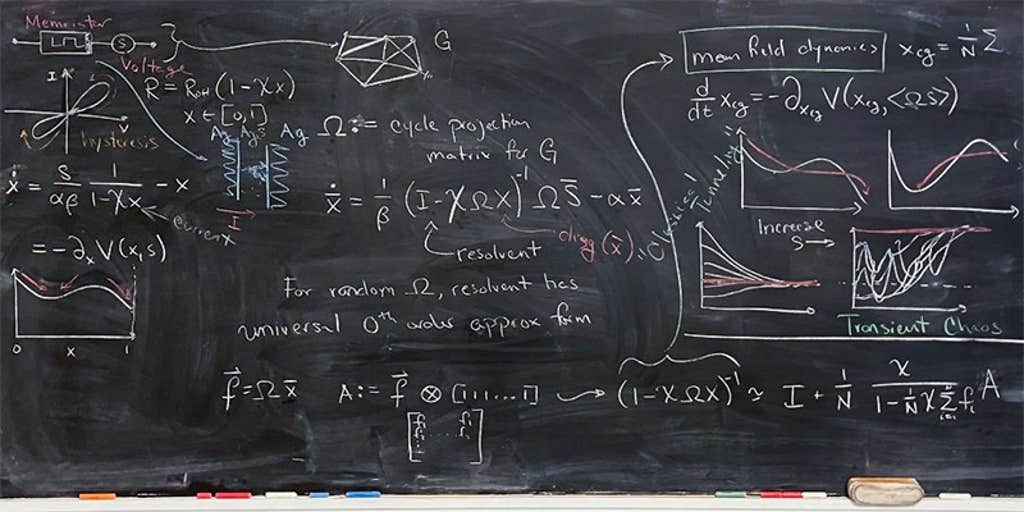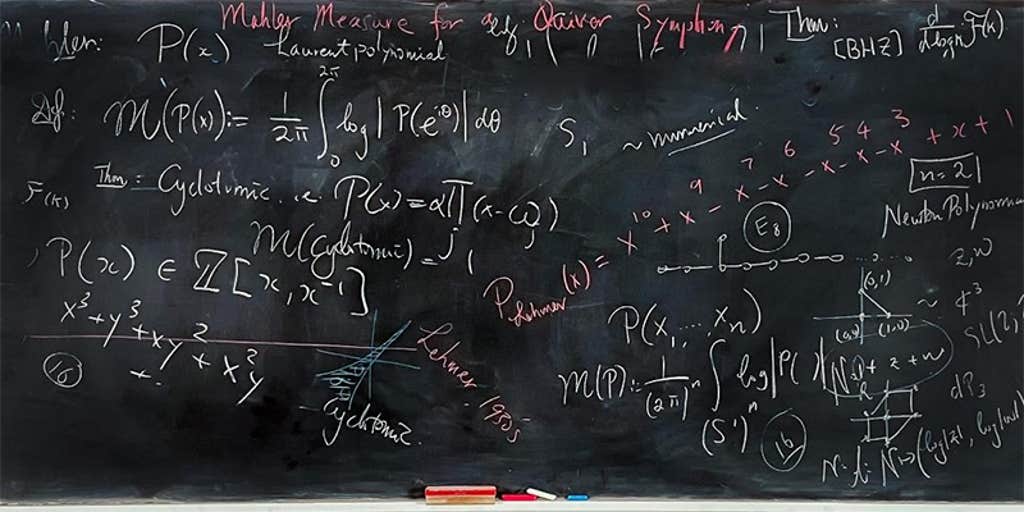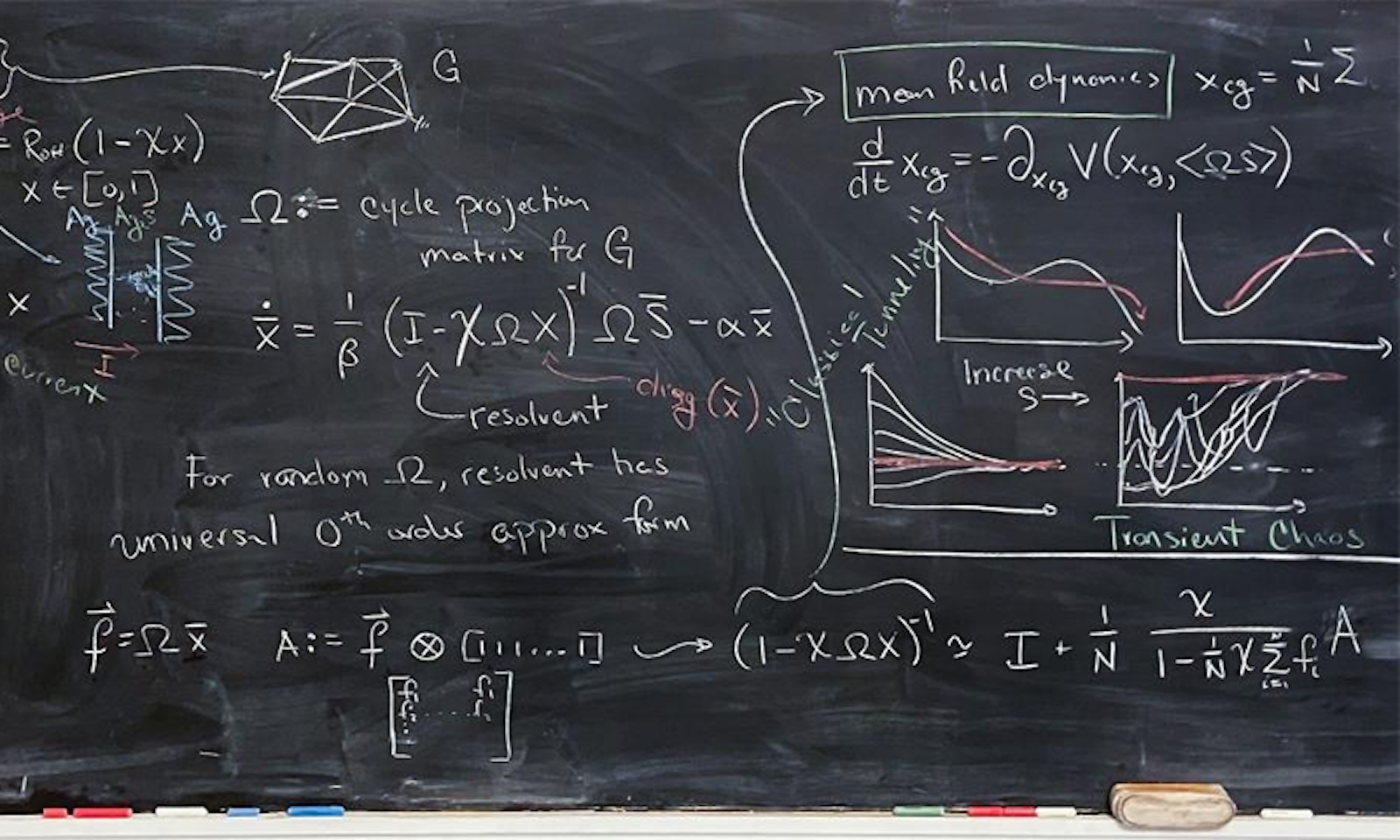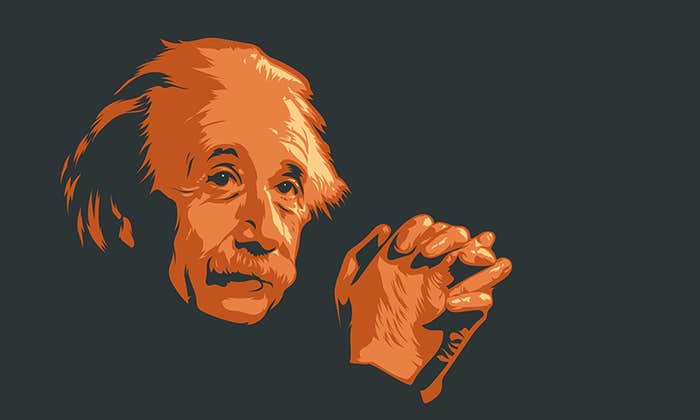In the beginning, there is nothing. Then a stroke of white appears. And another. Characters form. Shapes emerge from the darkness. Order out of chaos.
Something magical happens when a scientist writes with chalk on a blackboard. Hollywood directors know this, and have harnessed it in films from A Beautiful Mind to Oppenheimer. But no one appreciates the power of this venerable technology better than physicists and mathematicians, who infinitely prefer the humble blackboard to its high-tech rivals. The question is, why? What does slate-and-chalk offer, which cannot be simulated by paper or plastic?

“This is a cult that goes back centuries,” says Yang-Hui He, a professor at the London Institute for Mathematical Sciences. “When you hold a piece of chalk, and you’re looking at a blackboard, it feels like you’re doing mathematics, because this is how it has always been done.”
The practice dates to at least the 11th century A.D., when the Persian scholar Al-Biruni describes schoolchildren writing on slates. But tradition can’t be the only reason why physicists still reach for chalk. After all, few writers today use parchment and quill, even if that’s how Shakespeare wrote Hamlet.
When scientists collaborate in chalk, creativity flows.
In our quest to understand the timeless allure of blackboards, we’ve dropped in on our friends at the London Institute in Mayfair in central London. Not affiliated to any university, this rogue band of theorists—the United Kingdom’s only independent institute in the mathematical sciences—is devoted to the kind of calculations that are done in chalk.
As soon as we walk in, it stares at us: a mighty blackboard, measuring 12 feet by 6 feet, and taking up most of a wall. It’s the same in the next room. And the next. Each is dominated by a blackboard, which is either fixed to a wall, or else resting on a pair of easels, like a giant work-in-progress by some ecclesiastical painter. And all of them are covered in runes, riddles, and mathematical scribbles.

“Physics is a process of getting stuck,” explains the London Institute’s director, Thomas Fink. “Blackboards are the best tool for getting unstuck. You do most of your calculations on paper. Then, when you reach a dead end, you go to the blackboard and share the problem with a colleague. But here’s the funny thing. You often solve the problem yourself in the process of writing it out.”
To understand why, we talk to Albert Read, author of The Imagination Muscle. He argues that imagination is intertwined with acts of creation, of which writing is an example. “You don’t imagine something first and then write it down. It’s through the act of writing that ideas make themselves known.” Scientists at blackboards have “thoughts that wouldn’t come if they just stood there, with their arms folded.”
Blackboards are the best tool for getting unstuck.
A blackboard, then, is a stage for stand-up theorists. But the process doesn’t end there. What follows is like a relay race, according to Forrest Sheldon, a junior fellow at the Institute. “You take it in turns. One of you has started writing out a problem. But at a certain point, the other one grabs hold of the chalk, like a baton.”
Socrates believed the way to do philosophy was by dialogue. Two people proceed by question-and-answer, with an exchange of contradiction and confirmation. “When we’re battling it out at the blackboard, it’s the same thing,” says Fink. “The difference is that we can actually see the argument that we’re having, chalked up on the board.”
When the race is run, there still remains a last part of the process, says Alisa Sedunova, a visiting researcher at the Institute. “The next morning, when you come back in, the work you did yesterday is still up on the board. You see it every time you walk past. Until, one day, you see something that you didn’t see before.”
A blackboard skeptic might say that there’s no absolute reason why these three stages—the writing, the relay, and the rethink—can only take place on a blackboard. Nevertheless, in practice, most scientists are opposed to digital equivalents such as the Notability app, which allows you to draw on a touchscreen, while sharing your work with colleagues who have the same app. “With blackboards, there’s no subtle stress of ‘will this work, or will I lose it, or will the server go down?’” speculates Read. “It’s a bubble of security that lets the brain think clearly.” Partly, too, he suggests, it’s because today’s screens can be weapons of mass distraction. “You can check your emails, you can look at social media. The limitation of a blackboard is a strength because it forces you to think. It’s a very pure medium in that sense.”

On some level, theorists at a blackboard resemble magicians, philosophers, and athletes. They also have something in common with artists, producing intellectual artworks that seem designed for Instagram feeds. As you walk through the London Institute’s exhibition of blackboards, you’re struck by their austere beauty.
If theorists are artists, their chalk is the medium for rough drafts rather than finished products, says He. “The point of chalk is that it’s easy to rub out. Theorists are always making mistakes. If they’re not making mistakes, it means they’re not trying hard enough.” As for Fink, he loves the fact that, after the eraser has been used, some trace usually remains of what was written there before. “You can see where they went right, but you can also see where they went wrong.”
A recent history of note-making, The Notebook by Roland Allen, argues that the paper notebook is more than a tool for thinking. It’s an extension of the mind. What the notebook is for words, the blackboard is for equations. So when scientists collaborate in chalk, it’s the creative synthesis of two mathematical minds.
For a final word, we talk to Christie Marr, the executive director of the Academy for the Mathematical Sciences, which is currently being set up in the U.K. She sums up the collaborative art of the blackboard. “When you look at it, you can see what kind of dialogue took place there. Whether it was pedagogical. Whether they had it already mapped out. Or you might see three or four hands operating at the same time. Different colors. Smears. Crossings-out. Wrong turns. U-turns and moments of sudden clarity. The end result is a whole conversation that happened in chalk. That’s a beautiful thing.” ![]()
Lead image courtesy of the London Institute




























